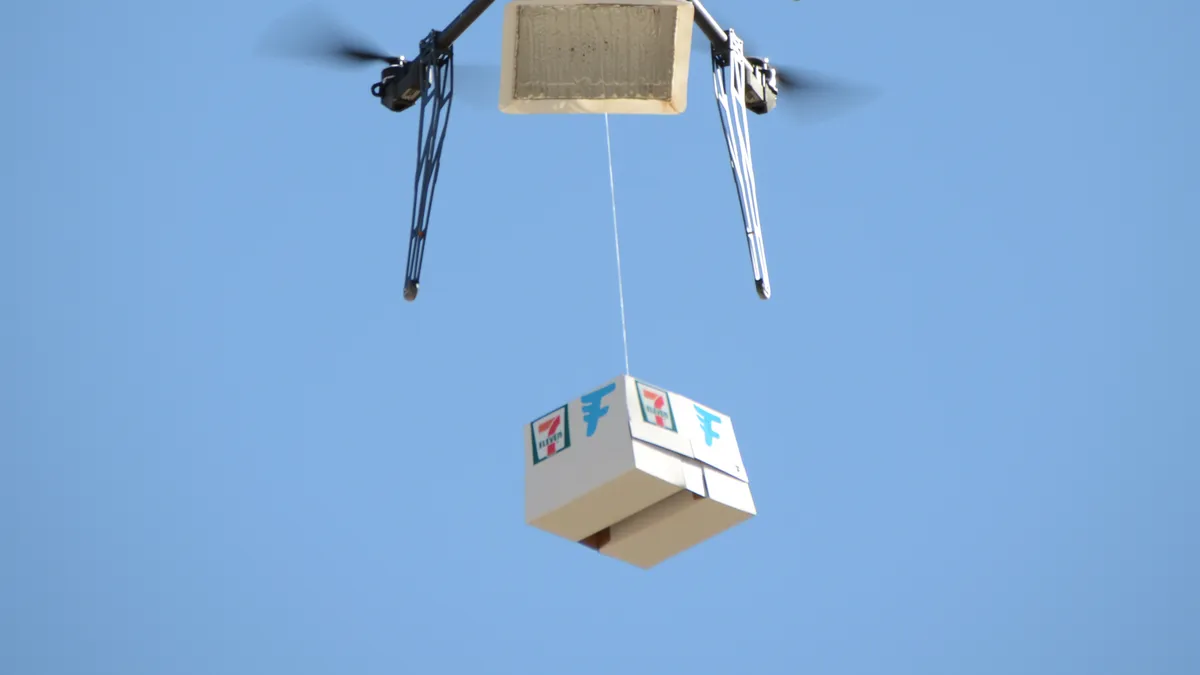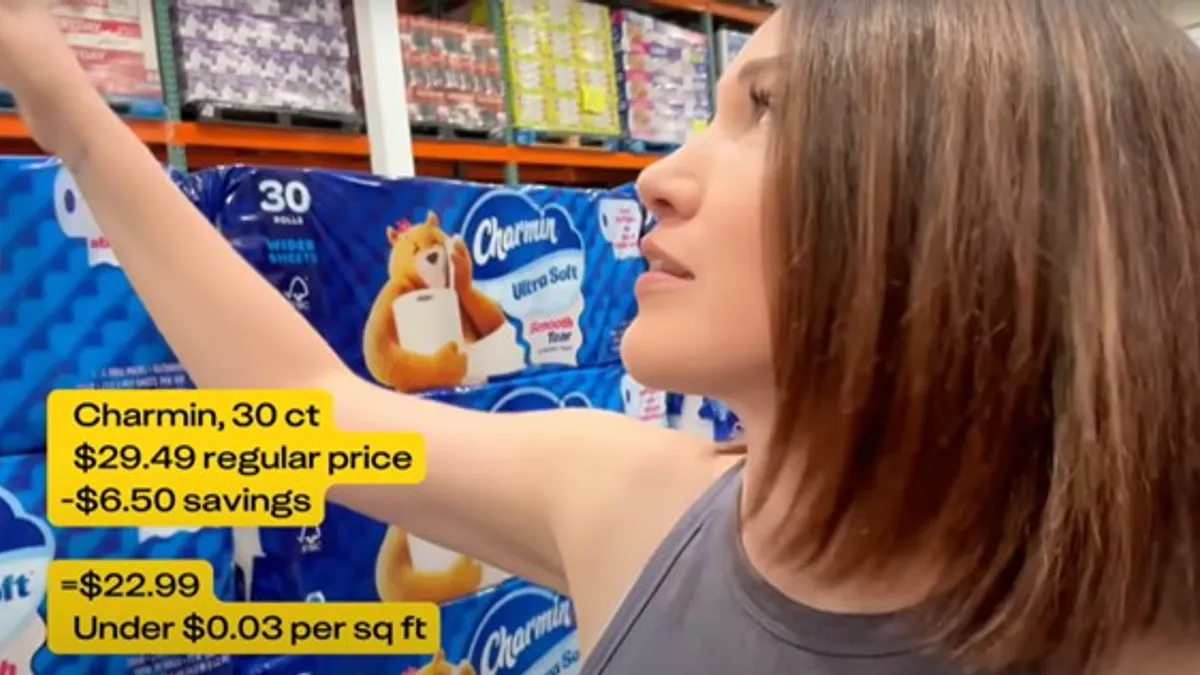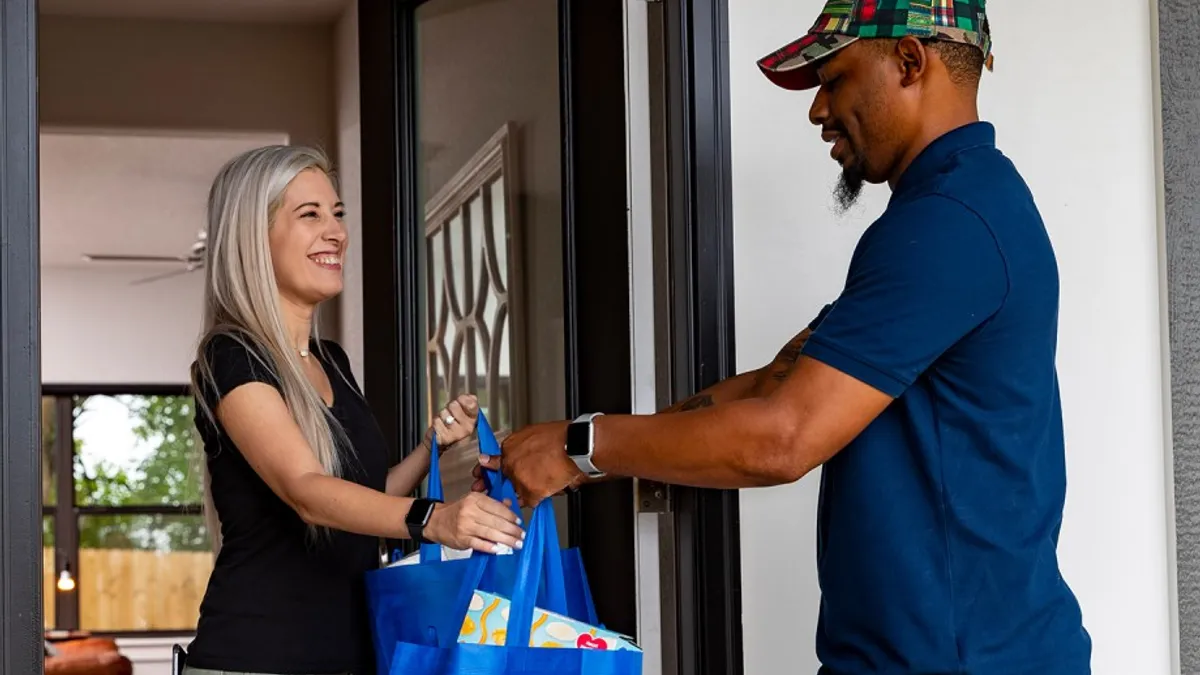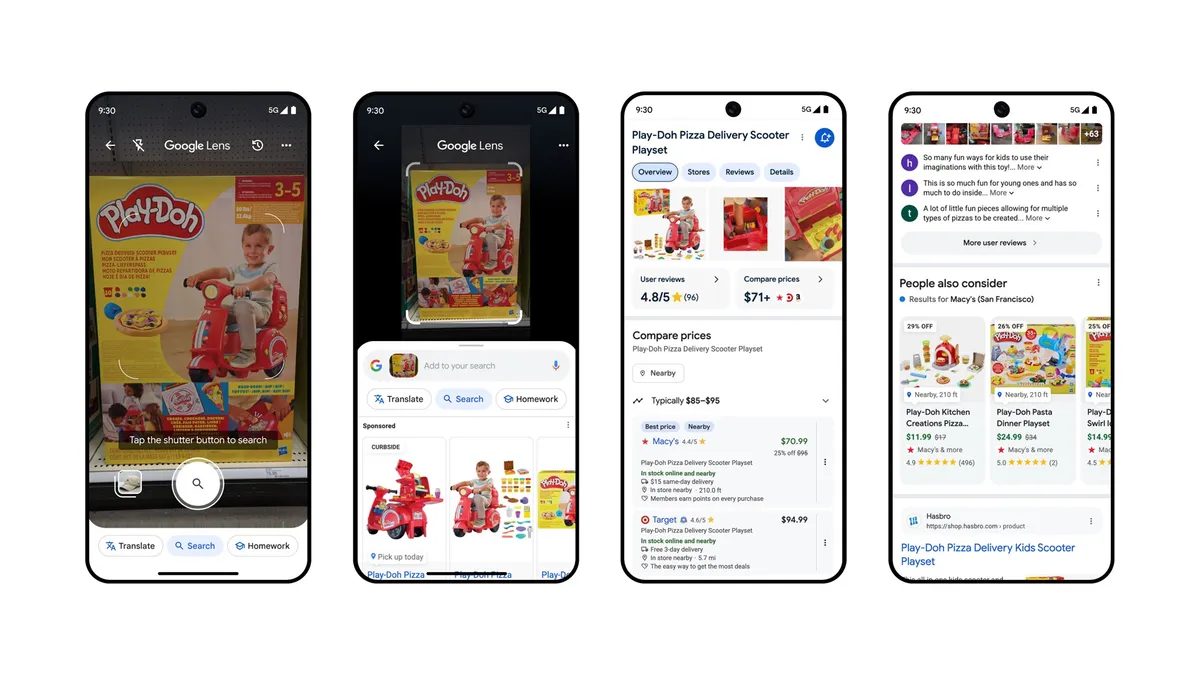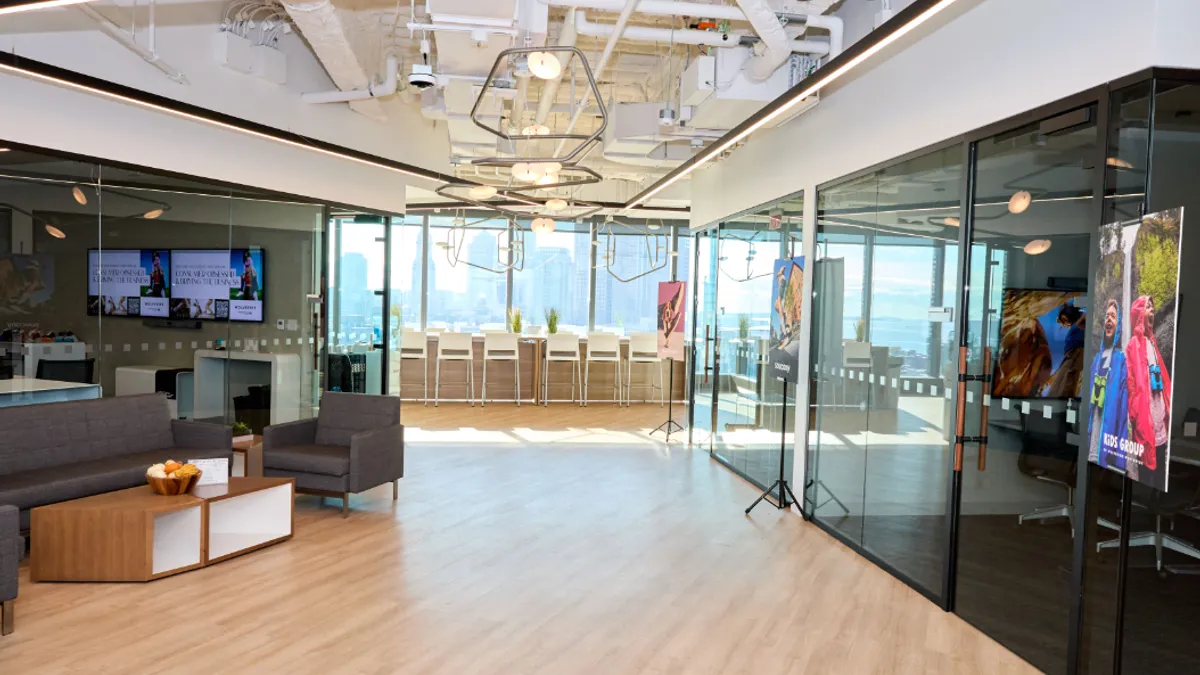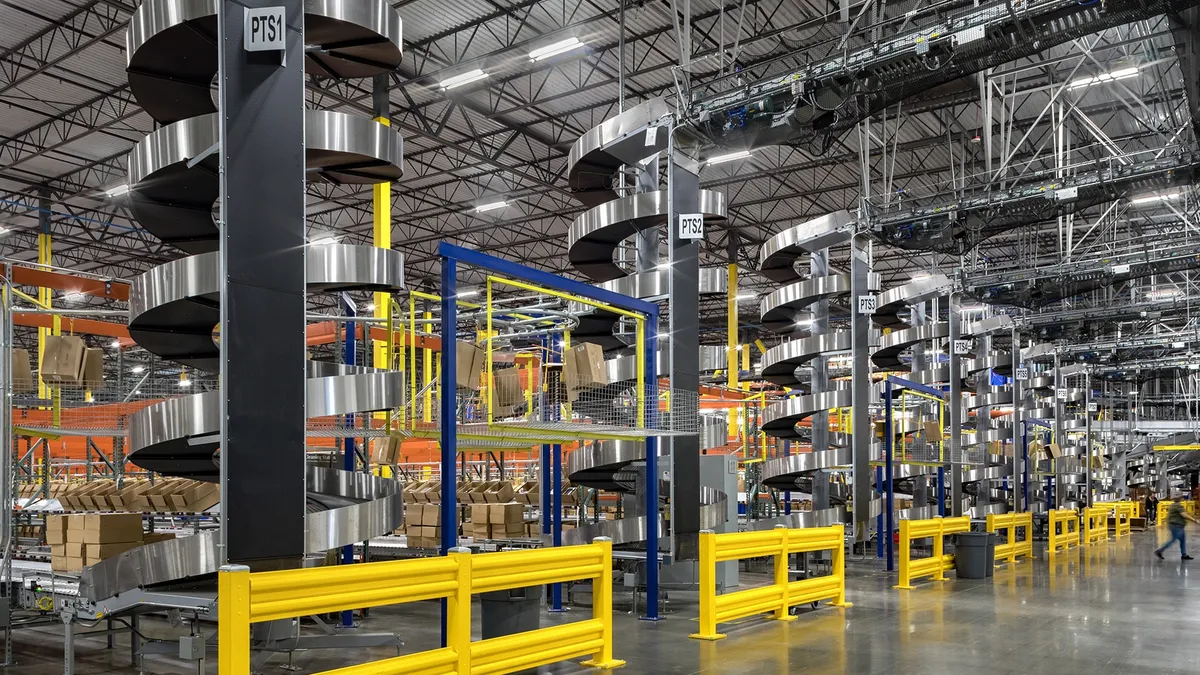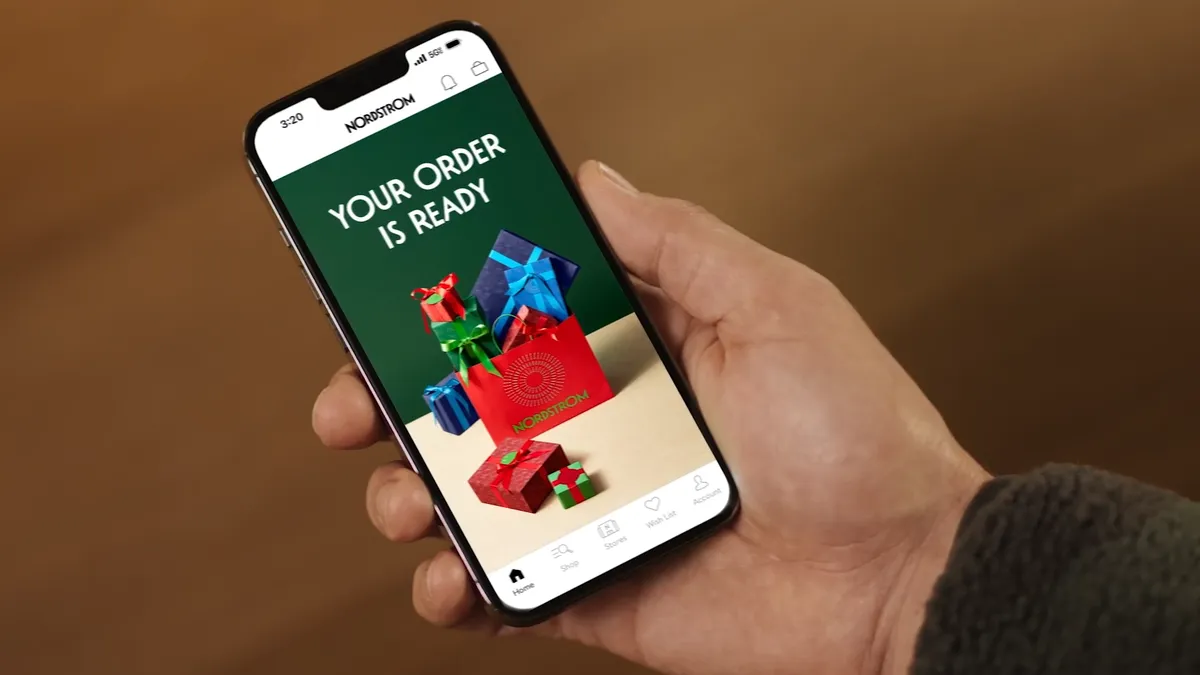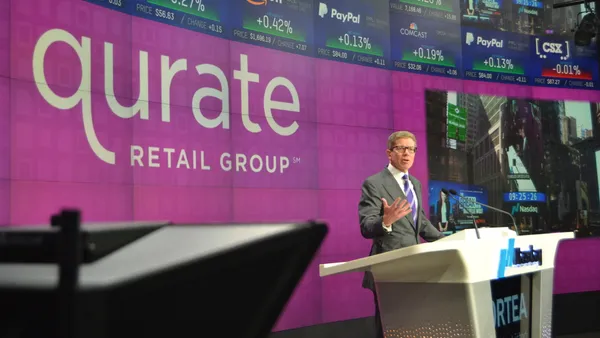Drone delivery continues to draw great interest from retailers, logistics companies and drone manufacturers — yet the average consumer is years away from getting burritos, books or bath towels delivered by drones on a regular basis.
The concept of drone delivery for retail emerged at almost four years ago, when Amazon chief Jeff Bezos made clear his ambitions to use drones as part of Amazon's push to accelerate its product deliveries. That announcement drew initial snickering, but Google, Wal-Mart and others soon after expressed series interest. Since then, there have been and continue to be many one-off drone delivery tests and demonstrations, as well as longer, but tightly-controlled pilot programs.
In the most recent high-profile demonstration, Amazon in March completed its long-awaited first public drone delivery demonstration in a U.S. setting: delivering a box of sunscreen to an outdoor location at its MARS 2017 conference in Palm Springs, CA. Though, the demonstration felt more like a publicity stunt than a significant technology showcase. In fact, it was probably less significant than Amazon's January test drone delivery to customers in the U.K.
Another attention-grabbing demonstration came courtesy of United Parcel Service. In February, it showed off a concept from Workhorse Group that allows delivery drones to be dispatched from a nest aboard a UPS vehicle while on a delivery route, make a delivery to a residence and return to the delivery vehicle’s next to be recharged for further deliveries. All of this happens automatically while the delivery vehicle’s driver completes other deliveries nearby. The implication of this demonstration was that drones could help improve delivery efficiency with minimal human involvement required.
Other delivery players have conducted similar tests in recent months: In November, one of the biggest test projects was conducted by drone operator Flirtey in the Reno, NV area, where the company made 77 drone deliveries for 7-Eleven.
Despite the hype around drones, it will be at least three years before drone delivery becomes real even in a very limited way, predicts Gartner. The research firm voiced that probability in a recent report overlooking the entire drone sector. Drone delivery is forecasted to represent less than 1% of the overall commercial drone market by 2020. “There is still a lot to figure out about drone delivery,” Gerald Van Hoy, senior research analyst at Gartner, told Retail Dive, summing up a list that includes lingering questions about regulations, economics, operational and logistical issues, and most importantly, customer acceptance.
Despite these hurdles, drone delivery is inevitable, said Yariv Bash, founder and CEO of drone delivery logistic company Flytrex. “Drone delivery will happen because logistics and fulfillment are a huge pain for retailers. I don’t see any chance of it not happening, but it will take time,” he told Retail Dive. “In the U.S., we are talking at least 2020 before this becomes a market — not the one-off tests you see today, which are publicity stunts, but a real, self-sustaining market.”
The regulatory challenge
Gartner’s prediction shouldn't necessarily surprise anyone; For the most part, it just attached a number to a notion many in drone delivery have already had acknowledged — drones won't take off overnight.
One of the clearest hurdles to the evolution of drone delivery in the U.S. is the slow and complex process of developing regulatory rules. The Federal Aviation Administration admitted after coming up with initial drone regulations last year that settling on delivery-specific rules will take at least a few years.
That reality probably puts the U.S. drone delivery market behind the market evolution in other countries, but many in the drone delivery sector are not critical of the long timetable.
“These drones are really small airplanes, and once you start thinking about them that way and treating them that way, things become much easier to figure out.”

Yariv Bash
Founder and CEO of Flytrex
“The FAA’s timetable is not a gating factor,” Jerome Ferguson, director of autonomous systems at UPS, told Retail Dive. “The FAA is really doing what it is supposed to do in doing everything is can to ensure a safe airspace.” UPS has a representative serving on the FAA’s drone regulation advisory committee, Ferguson said, so it at least has a seat at the table as rules get sorted out.
While the FAA appears intent on eventually specifying drone delivery rules, it also remains unclear what additional rules, if any, could be enforced by individual states and municipalities, Van Hoy cautioned. Drone delivery companies may need to deal with and reassure multiple agencies.
Bash also advised patience. “These drones are really small airplanes, and once you start thinking about them that way and treating them that way, things become much easier to figure out,” he said. “U.S. regulators are taking a mature approach, approving pilot programs before deciding the rules.”
Bash added that it’s in the best interests of drone delivery companies to have a positive attitude about working with regulators (Amazon reportedly had been frustrated by a lack of regulatory progress in the U.S.) “Regulators around the world need to see you as a partner, or else it becomes very hard to get things done,” he said.
The reliability challenge
The regulatory process alone won't determine how quickly drone delivery becomes a common fulfillment option. The reality is that even if regulatory rules were in place today, most companies aspiring to deliver packages via drone would not likely be ready to do it in more than a very limited way.
The tests and pilot programs these companies have been running are helping them figure out operational, technical and logistical details regarding how drone delivery would work on an everyday commercial basis, but much more needs to be sorted out. “The biggest gating factor for drone delivery is that the technology still requires some evolution,” said Ferguson, explaining that sensor-based obstacle avoidance methods are still something many drone makers are working to improve.
“What we need to aim for is that drone delivery needs to work reliably 99.999% of the time or no one will accept it.”

Yariv Bash
Founder and CEO of Flytrex
Architectures need to be settled on as well. UPS, for instance, continues to test various types of drones launched and controlled in different ways. Amazon has even floated the idea of a blimp-based fulfillment center, from which drones could launch and return to recharge. Not everyone needs to use the same architecture, but it's clear in many cases that delivery companies are still considering their options.
Companies making and operating delivery drones also need to work on perfecting all of the aspects of a single drone flight — the launch, safe outbound operation, adherence to chosen flight path, execution of the delivery, safe return, docking and recharging. The recent UPS demonstration showed that minor glitches still can occur during these phases: At one point during the demo, a drone failed to launch properly from its dock on a delivery truck.
“That sort of glitch is the real reason why mainstream use of delivery drones will take a while,” Bash said. “What we need to aim for is that drone delivery needs to work reliably 99.999% of the time or no one will accept it.”
That number sounds like a lot where companies would start in terms of a reliability benchmark, Ferguson said, though he admitted it's still so early in the evolution of drone delivery that UPS hasn't nailed down a reliability standard or guarantee.
The acceptance challenge
In addition to the often-discussed regulatory and reliability hurdles for drone delivery to conquer, another challenge is getting consumers and business customers to accept the notion of receiving packages via drone. It’s also the challenge with the largest degree of uncertainty, considering so few customers have experienced having deliveries arrive by drone, even in tests and pilot programs.
“Figuring out public acceptance is a hurdle,” said Ferguson. “Some customers may like this idea, and some customers may not want a drone coming into their property. We still need to find out a lot about what will work for them.”
About 75% of the 1,465 consumers surveyed by the United States Postal Service in October 2016 said they expect drone deliveries to be offered by 2021, and 44% said they liked the idea of drone delivery. But one of the biggest concerns holding back consumers who aren't a fan of the idea are fears of safety and intentional misuse, according to the report.
“It’s early enough in this market now that we may not have seen the players emerge who will dominate — it may not be who we think."

Gerald Van Hoy
Senior research analyst at Gartner
The ability of a drone to make a delivery could depend greatly on external conditions at a residence, business or other delivery location, Van Hoy said, adding “Can it land on a porch, and will a customer want that? Will we all need to have small landing pads that can be placed in our yards? ”
Broad customer acceptance will be key for delivery companies that want to use drones on their routes on a daily basis, so those companies likely will need to fill the many months and years to come with ever-larger tests that focus on evaluating the customer experience following a drone delivery. There also have been some suggestions that some delivery companies may start offering drone delivery only by customer request — the customer would click on the drone delivery option when ordering an item. That's one way to find out who's interested — and who's not.
Long-term opportunity
Despite all of these challenges, interest in drone delivery by retailers and logistics firms remains high and companies continue to explore the potential of drone delivery, acknowledging that it is likely more of a long-term opportunity than a short-term one.
“Some parties may talk about drones right now to capture some of the hype value and show everyone they can do it, too,” Van Hoy said, but added that he thinks UPS, DHL and Amazon, among others, seem serious.
“If you’re UPS or DHL, you’re making many deliveries on many routes, so that makes drone delivery more affordable, and the drone can help increase your route efficiency,” he said. “If it’s a single-client delivery, will that customer pay for the privilege of getting a delivery by drone?”
There are two environments that Van Hoy thinks drone delivery can work in initially in advance of broader mainstream market schemes taking off. One is rural areas — where delivery points are farther apart and finding the right landing spot is easier than in a more cramped neighborhood setting. The other is campus environments — including corporate campuses and in and around warehouses. “In these kind of environments, taking a load from one building to another or across a giant warehouse, drone delivery becomes a modern version of pneumatic tubes,” Van Hoy said. “I think that’s where drone delivery takes hold first.”
Beyond that, the broader consumer market opportunity lies far enough off that it is not yet clear which companies will lead the way, what kind of drones they will use or what type of architectures will underpin them. Each detail will slide into place over the next three years, perhaps along with a few surprises.
“We may see the scope of drone delivery expand to a drone performing multiple deliveries before returning,” Van Hoy said. “It’s early enough in this market now that we may not have seen the players emerge who will dominate— it may not be who we think. We also may not even have a sense yet of a lot of the innovation that will occur as companies figure out how to make drone delivery work for them.”


